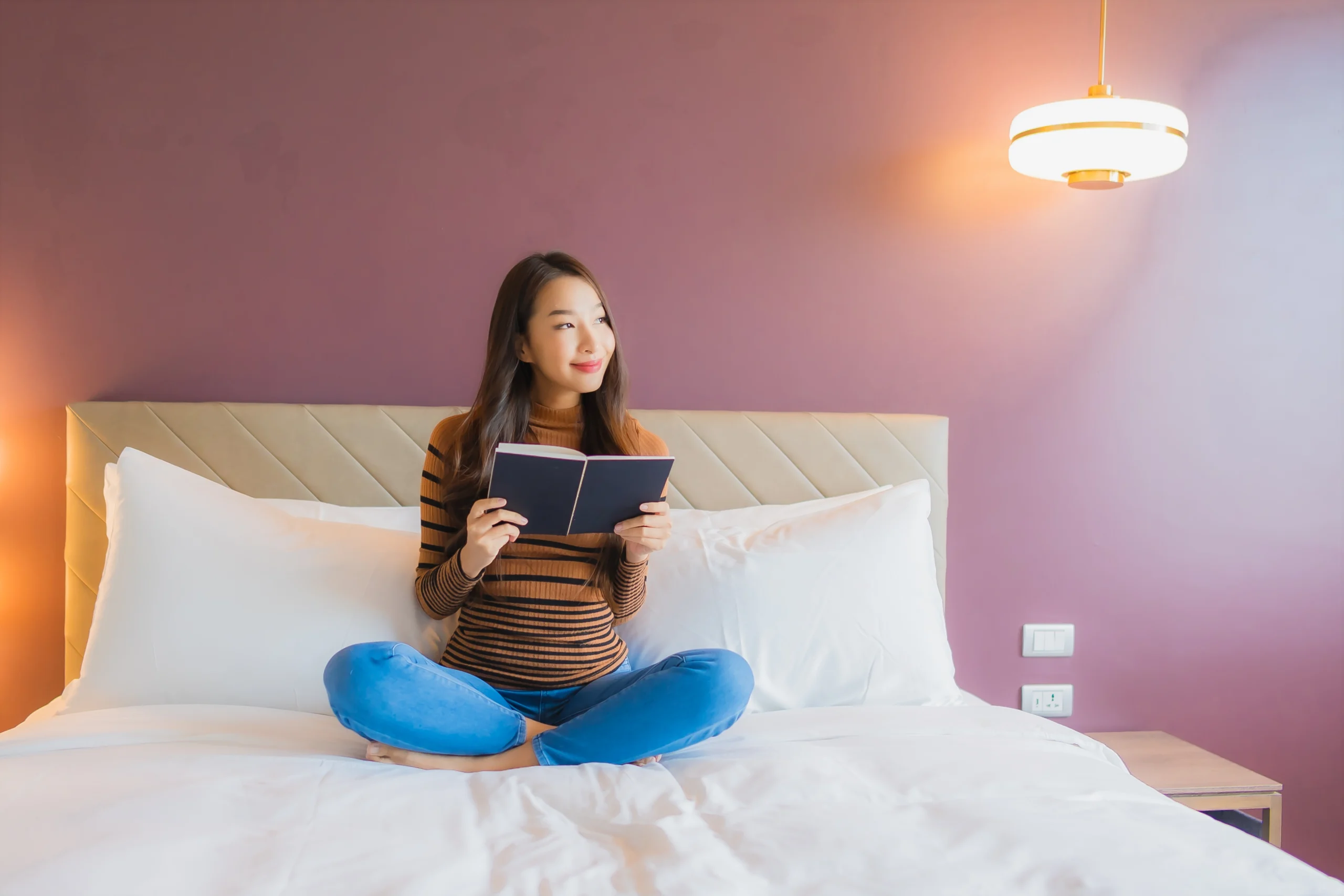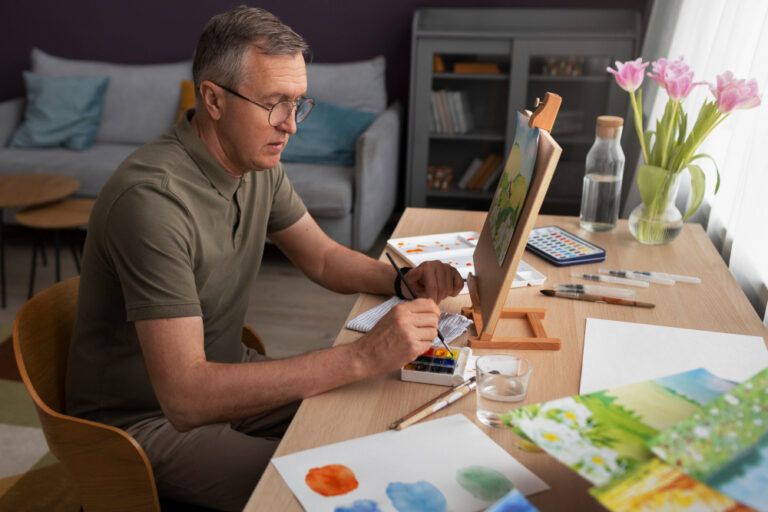
In today’s fast-paced, hyper-connected world, creating a Tech-Free space at home has become more essential than ever. Our bedrooms, which should serve as sanctuaries for rest and rejuvenation, are increasingly filled with devices that emit light, notifications, and mental clutter.
Smartphones, tablets, laptops, smart TVs, and other gadgets may seem harmless, but they interfere with natural sleep patterns, increase stress levels, and reduce overall sleep quality.
By building a tech-free bedroom, you are taking an intentional step toward improving your health, enhancing relaxation, and fostering a deep, restorative sleep.
Creating a bedroom environment that promotes restful slumber requires more than just moving devices out of reach—it’s about designing a tech-free sleep environment that encourages calm, relaxation, and disconnection.
This guide will walk you through practical strategies, from setting boundaries with devices to transform your bedroom into a serene, screen-free haven. You’ll discover how a digital detox in your bedroom can significantly impact your sleep quality and overall well-being.

Understanding the Importance of a Tech-Free Bedroom
Before diving into practical steps, it’s essential to understand why a tech-free bedroom matters. Numerous studies have shown that exposure to screens before bedtime suppresses melatonin production—the hormone responsible for regulating sleep cycles.
This disruption can lead to difficulties falling asleep, frequent night awakenings, and poor sleep quality. Additionally, constant notifications and the temptation to check social media or emails trigger mental alertness at a time when your brain should be winding down.
A tech-free sleep environment supports natural circadian rhythms, reduces cognitive stimulation, and signals to your brain that it’s time to rest. Creating this environment isn’t just about removing gadgets—it’s about cultivating habits, ambiance, and routines that foster relaxation.

Step 1: Remove Electronic Devices from Your Bedroom
The first and most obvious step in building a tech-free bedroom is to remove electronic devices that are not essential. Consider these strategies:
- Smartphones: Charge your phone outside the bedroom or use a basic alarm clock instead.
- Televisions: Avoid placing a TV in the bedroom; the bright screen and content can delay sleep onset.
- Laptops and Tablets: Limit work and leisure screen time to other areas of the house.
- Wearables: If possible, disable notifications or leave smartwatches in another room during sleep.
By eliminating these sources of stimulation, you create a sanctuary where the mind can relax and prepare for restorative sleep.

Step 2: Set Up a Tech-Free Sleep Environment
A tech-free sleep environment is more than just a physical space—it’s about designing your bedroom to support relaxation. Here are some essential tips:
- Lighting: Opt for soft, warm lighting in the bedroom. Avoid bright overhead lights or blue-light-emitting lamps in the evening. Consider dimmable lights or bedside lamps with adjustable settings.
- Sound: Create a quiet environment. Use heavy curtains, rugs, or white noise machines (analog versions, not apps) to block external disturbances.
- Furniture Placement: Keep your bed as the focal point of rest. Avoid placing desks or entertainment units near your sleeping area to reduce mental associations with work or activity.
- Aromatherapy: Essential oils like lavender or chamomile can create a calming atmosphere, signaling your brain to wind down.
Step 3: Embrace a Digital Detox Before Bed
Incorporating a digital detox routine before bedtime can significantly enhance your sleep quality. Here’s how to do it:
- Establish a Screen Curfew: Set a specific time, ideally 60–90 minutes before bed, to stop using electronic devices.
- Engage in Relaxing Activities: Read a physical book, journal, meditate, or practice gentle stretching. These activities prepare your mind for sleep.
- Avoid Social Media and News: Evening exposure to social media or news can increase stress and emotional stimulation, making it harder to fall asleep.
- Create a Bedtime Ritual: A consistent routine signals to your body that it’s time to sleep. Include calming practices like deep breathing or listening to soft music.
Step 4: Optimize Your Bedroom for Comfort and Relaxation
A tech-free bedroom should prioritize comfort. This includes investing in sleep-friendly elements:
- Mattress and Pillows: Ensure your mattress supports your preferred sleeping position, and use pillows that promote neck and spinal alignment.
- Bedding: Choose breathable, soft fabrics. Consider natural materials like cotton or bamboo that regulate temperature.
- Temperature Control: Keep the bedroom cool (around 65°F or 18°C). A slightly cooler environment improves sleep quality.
- Clutter-Free Space: Minimalist design reduces visual stress and creates a serene atmosphere conducive to sleep.
Step 5: How to Sleep Better Without Technology
Learning how to sleep better without technology involves more than just removing screens. It requires intentional practices and lifestyle adjustments:
- Maintain a regular sleep routine by going to bed and waking up at the same time every day, including weekends.
- Mindful Evening Routine: Engage in mindfulness, meditation, or breathing exercises to calm your mind.
- Limit Caffeine and Alcohol: Both can interfere with sleep cycles. Avoid these substances in the evening.
- Natural Light Exposure: Spend time in natural daylight during the day to regulate melatonin production.
By combining these habits with a tech-free bedroom, you create an environment that supports natural, restorative sleep.
Step 6: Use Analog Alternatives
Transitioning to a tech-free sleep environment may feel challenging, but incorporating analog alternatives can make the process enjoyable:
- Books and Journals: Reading or journaling is a great way to wind down without screens.
- Manual Alarm Clocks: Replace your phone alarm with a traditional clock.
- Paper Planners: Use a paper planner to organize thoughts and tasks, reducing the need for digital devices.
- Board Games or Puzzles: These can be relaxing, screen-free activities before bed.
Step 7: Set Boundaries for Technology Use in the Home
A digital detox is most effective when it extends beyond the bedroom. Setting household rules about technology use supports better sleep habits:
- Device-Free Zones: Designate areas like bedrooms and dining rooms as device-free zones.
- Family or Roommate Agreements: Encourage collective adherence to tech-free times, particularly before bedtime.
- Scheduled Screen Breaks: Limit technology use during certain hours, especially in the evening.
Step 8: Incorporate Mindfulness Practices
Mindfulness practices enhance the benefits of a tech-free sleep environment by calming the nervous system and reducing stress:
- Meditation: Even 5–10 minutes of meditation can lower cortisol levels and prepare the body for sleep.
- Breathing Exercises: Techniques like the 4-7-8 method promote relaxation.
- Gratitude Journaling: Writing down positive thoughts before bed can shift focus from stress to calmness.
Step 9: Personalize Your Tech-Free Bedroom
Creating a tech-free bedroom is a personal journey. Consider what makes you feel most relaxed:
- Colors: Soft, neutral tones often create a calming atmosphere.
- Textures: Incorporate cozy blankets, rugs, and cushions to promote comfort.
- Decor: Minimalist decor, plants, or nature-inspired artwork can enhance serenity.
By tailoring your bedroom to your preferences, you reinforce the sense of sanctuary and relaxation.
Step 10: Monitor and Adjust Your Sleep Routine
Implementing a tech-free sleep environment is an ongoing process. Pay attention to your sleep patterns and make adjustments:
- Track Sleep Quality: Use a sleep diary (or non-digital trackers) to observe improvements or challenges.
- Experiment with Bedtime Rituals: Adjust your pre-sleep routine based on what relaxes you most.
- Gradual Changes: If removing technology entirely feels difficult, start with partial adjustments and increase over time.
The Benefits of a Tech-Free Bedroom
Building a tech-free bedroom has numerous benefits that extend beyond better sleep:
- Improved Sleep Quality: Reduced blue light exposure and mental stimulation enhance deep sleep.
- Reduced Stress and Anxiety: Disconnecting from notifications and social media lowers cortisol levels.
- Better Focus and Mental Clarity: Morning alertness improves when you sleep well.
- Enhanced Relationships: A tech-free bedroom fosters personal connection if sharing the space with a partner.
Common Challenges and How to Overcome Them
Transitioning to a tech-free sleep environment can present obstacles:
- Fear of Missing Out (FOMO): Inform friends or family of your screen-free routine to manage expectations.
- Habitual Checking: Replace the urge to check devices with reading or journaling.
- Work Obligations: Set clear boundaries for after-hours work and communicate availability.
With patience and consistency, these challenges diminish over time.
Tech-Free Bedroom Ideas for Inspiration
Here are some actionable ideas for creating a serene, tech-free bedroom:
- Minimalist Design: Simplify furniture and decor to reduce mental clutter.
- Nature Elements: Incorporate plants, natural fabrics, and wood accents for calmness.
- Calming Colors: Soft blues, greens, and neutrals promote relaxation.
- Aromatherapy Corner: Place a diffuser with relaxing scents like lavender or eucalyptus.
- Reading Nook: Create a cozy corner with a lamp and a small bookshelf.
Long-Term Impact of a Tech-Free Sleep Environment
A tech-free sleep environment not only improves nightly rest but positively affects long-term health:
- Physical Health: Better sleep strengthens the immune system, supports heart health, and aids weight management.
- Mental Health: Reduced anxiety, improved mood, and enhanced cognitive function are common benefits.
- Sleep Consistency: Establishing a tech-free routine reinforces healthy circadian rhythms.
Conclusion
Building a tech-free bedroom is a transformative step toward better sleep, enhanced mental clarity, and improved overall well-being. By removing devices, embracing a digital detox, and optimizing your sleep environment, you create a sanctuary that encourages deep, restorative rest.
With mindful routines, analog alternatives, and a personalized approach, learning how to sleep better without technology becomes achievable and sustainable. Your bedroom can become a haven of tranquility—a space where technology no longer dictates your rest, but where peaceful, rejuvenating sleep thrives naturally.
Creating a tech-free bedroom is not just a lifestyle choice; it’s an investment in your health, happiness, and long-term well-being. Start today, and experience the profound difference a screen-free sanctuary can make in your life.



